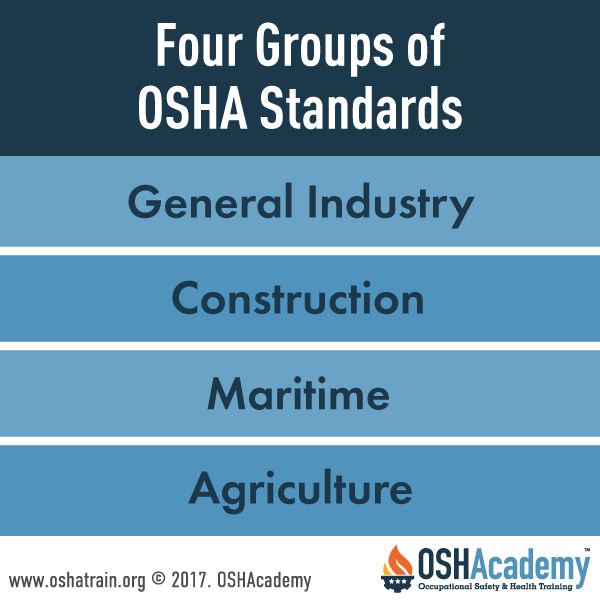OSHA Standards and Inspections
What are OSHA Standards
OSHA standards (also called "rules") describe the methods employers must use to protect employees from hazards. The rules are designed to protect workers from a wide range of hazards

OSHA writes the standards for four primary industrial groups: general industry, construction, maritime, and agriculture. Where there are no specific standards, employers must comply with the General Duty Clause of the OSH Act.
OSHA issues standards for a wide variety of workplace hazards, including:
- toxic substances
- electrical hazards
- fall hazards
- hazardous waste
- machine hazards
- infectious diseases
- fire and explosion hazards
- dangerous atmospheres
OSHA standards appear in the Code of Federal Regulations (CFR). The OSHA standards for the four primary industries are broken down into Parts as follows:
- Part 1910 is known as the General Industry Standards; Some of the types of industries covered by the General Industry standards are manufacturing, the service sector, and health care
- Part 1926 covers the Construction industry
- Parts 1915, 1917 and 1918 are Maritime Industry standards
- Parts 1928 cover agricultural industry standards
Knowledge Check Choose the best answer for the question.
4-1. Where there are no specific OSHA standards, employers must comply with _____.
You forgot to answer the question!
